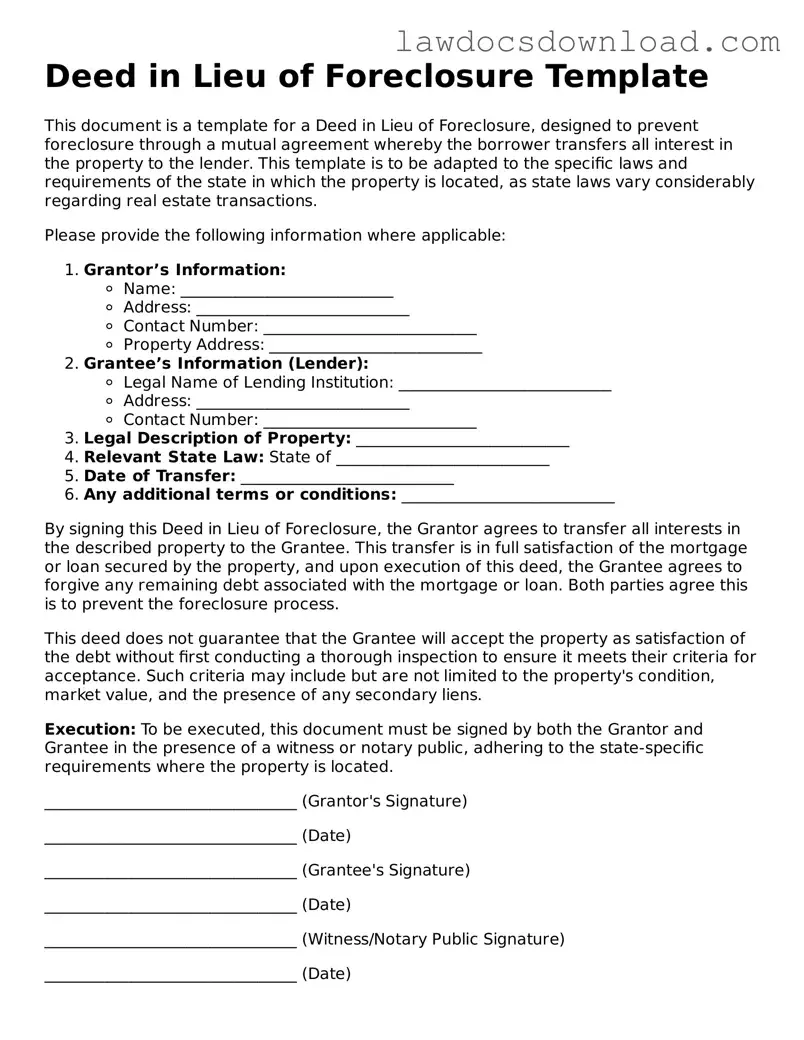Deed in Lieu of Foreclosure Template
This document is a template for a Deed in Lieu of Foreclosure, designed to prevent foreclosure through a mutual agreement whereby the borrower transfers all interest in the property to the lender. This template is to be adapted to the specific laws and requirements of the state in which the property is located, as state laws vary considerably regarding real estate transactions.
Please provide the following information where applicable:
- Grantor’s Information:
- Name: ___________________________
- Address: ___________________________
- Contact Number: ___________________________
- Property Address: ___________________________
- Grantee’s Information (Lender):
- Legal Name of Lending Institution: ___________________________
- Address: ___________________________
- Contact Number: ___________________________
- Legal Description of Property: ___________________________
- Relevant State Law: State of ___________________________
- Date of Transfer: ___________________________
- Any additional terms or conditions: ___________________________
By signing this Deed in Lieu of Foreclosure, the Grantor agrees to transfer all interests in the described property to the Grantee. This transfer is in full satisfaction of the mortgage or loan secured by the property, and upon execution of this deed, the Grantee agrees to forgive any remaining debt associated with the mortgage or loan. Both parties agree this is to prevent the foreclosure process.
This deed does not guarantee that the Grantee will accept the property as satisfaction of the debt without first conducting a thorough inspection to ensure it meets their criteria for acceptance. Such criteria may include but are not limited to the property's condition, market value, and the presence of any secondary liens.
Execution: To be executed, this document must be signed by both the Grantor and Grantee in the presence of a witness or notary public, adhering to the state-specific requirements where the property is located.
________________________________ (Grantor's Signature)
________________________________ (Date)
________________________________ (Grantee's Signature)
________________________________ (Date)
________________________________ (Witness/Notary Public Signature)
________________________________ (Date)
This template is provided as a general guide. Individuals are strongly encouraged to consult with a qualified legal professional to ensure that all legal proceedings are conducted in accordance with local laws and regulations, and to address any specific circumstances or concerns.
